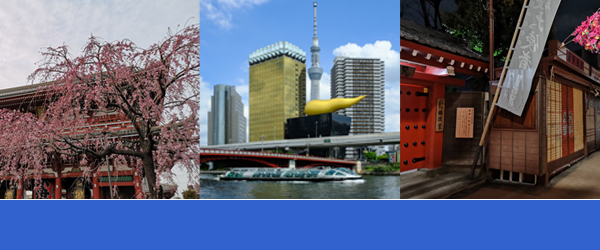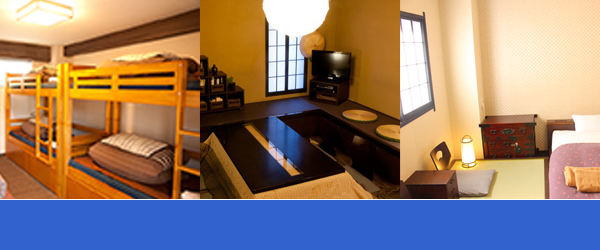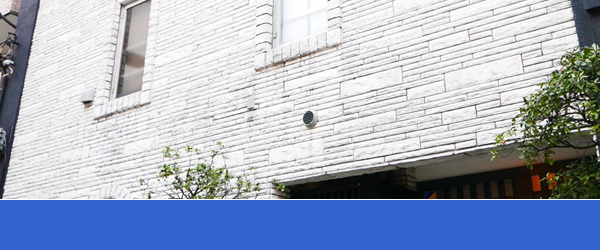Tokyo. The economic heart and cultural forefront of Japan, you can find nearly anything in this capital city ーand this is no different with food. Aside from various cuisines of the world, chances are you can find restaurants serving regional dishes from all across Japan, from the famous curry soup of Hokkaido to traditional Okinawan/Ryukyu cuisines of the southernmost islands.
But have you ever wondered what local foods Tokyo has to offer, if there is such a thing? Unbeknownst to many, Tokyo actually has its own share of rich culinary history and delectable local dishes, one of which I will share with you today.
Without further ado, allow me to introduce the Monjayaki, a special dish born here in the humble downtown of the Japanese capital.
What is Monja-yaki?

So what is Monjayaki? Monjayaki, or just Monja in short, is a food kin to the famous Okonomiyaki of Osaka, but with slightly different ingredients and a significantly different texture. Similar to okonomiyaki, this dish is also a savory Japanese pancake type of meal that is cooked on a hot iron plate, with the primary ingredients being more or less the same: batter, cabbage, and oftentimes meat. However, the key difference is in the texture and preparation method; contrary to the solid circular shape of its Kansai counterpart, Monja is much more gooey and soft, and not always circular.
The visual presentation of the dish may be surprising at first, possibly quite unlike anything you’ve had before. While I must admit that it might not be the most visually appealing food you’ll ever see, as it is essentially a brown gooey mixture of chopped ingredients, I guarantee that one hot savory bite will leave your tastebuds craving for more.
Monjayaki can come with many different toppings, including the likes of curry, seafood, and kimchi. Some personal favorites of mine are kimchi pork monja, Babystar (a popular dagashi made of small bits of flavored instant ramen) monja, and the classic Mentai-Mochi-Cheese monja (monja with spicy cod roe, mochi, and cheese). The possibilities are endless, and that’s part of the fun.
Monjayaki Origins
Monja originated in downtown Tokyo, specifically at local snack shops called Dagashiya in the Tsukishima area, back in the Meiji era as a sort of quick, hot snack for children. Back when paper was scarce due to the aftermath of the war, local Dagashiya would allow children to practice their writing on a hot plate using a simple batter of flour and water, which they could eat as a snack afterwards. Hence, this dish was originally called Mojiyaki, which translates to “fried words”.
Since then, Mojiyaki saw several changes, such as the inclusion of vegetables, meats, and seafood, as well as a growing popularity, and throughout the next 70 years it evolved into the modern day “Monjayaki” that is loved by so many. Although its roots can be traced back to a children’s snack, nowadays it is a popular meal amongst people of all ages.
Where to find Monja
Without a doubt, Tsukishima, the birthplace of Monja, is where you can find the most Monjayaki restaurants. In fact, Tsukishima is so synonymous with monja that there is even a whole street dedicated to this delicacy! Fondly referred to as “Monja Street”, you can find more than 50 monja shops lining the bustling shopping district, each with their unique tastes and specialties. Beyond Monja Street are even more shops, some with a modern touch and others with a traditional atmosphere, so if you have the chance, try to discover your own personal favorite!
What’s great about Monja Street is that no matter which store you wander into, you’re sure to enjoy authentic, quality monja, and be welcomed by friendly waiters. In addition, most shops recently have English menus as well, so you don’t need to worry about accidentally ordering something too exotic (although you’re more than welcome to challenge yourself). And, of course, let’s not forget to mention that it’s not even a minute’s walk from Tsukishima station. Super accessible!
Outside of Tsukishima, Monja restaurants are located in various neighborhoods all across Tokyo, but one area with a particularly strong monja presence is the historic site of Asakusa. While famous for the Sensoji-Temple and just a short walk to the Tokyo Skytree, you may be surprised to spot multiple Monjayaki shops concentrated in this traditional area. Asakusa style monja has also been around for a while, so you may be interested in comparing the two -you’ll notice that they are actually prepared slightly differently!
The Monja Experience
When you arrive at a monja restaurant, the first thing you’ll notice is that all the tables have a huge steel plate/grill fixed in the center. This is where your Monjayaki will be cooked (be careful not to touch it, you don’t want to burn yourself!). Before you take a seat, don’t forget to put away your outer garments in the hidden compartment inside your seat, otherwise they will smell like monja for several days.

After you order, the waiter will bring the Monjayaki of your choice to your table in a bowl of fresh ingredients. You can choose to either cook the Monjayaki by yourself, or ask the server to cook it for you. If you’re with a local, or if you’re up for a challenge, I would recommend trying your hand at making it yourself! The waiter can guide you through the steps so no need to worry! If you would rather have it prepared for you (that’s what I always do), have your cameras ready, as the waiter concocts the meal with a flamboyant display of clattering spatula. Whether you make it yourself or have it done for you, the preparation is an exciting part of the Monja experience.
Once you have your monja nice and sizzling on the grill, all that’s left is dig in! A single monja is surprisingly not too filling, faithful to its origins as a snack, so you can easily try out another flavor or two! Remember to enjoy the different stages of monja, as the texture transforms from soft and gooey to crispy and crunchy.

Due to its malleable texture, the proper way to eat this food is to take small bite-size portions directly from the iron plate, using a petit size steel spatula.
Even when with a group, everyone takes these small portions directly from the grill. This interactive and communal aspect of monja, as well as the experience of preparing and cooking right at your table, is part of what makes Monjayaki truly special. It’s not just a meal but a social event, perfect for sharing with friends and family.
How to make it
So you’ve arrived at a Monja shop, you’ve ordered your preferred monja flavor, and now you have a bowl of fresh ingredients ready to be transformed into your very own Monjayaki. If you’re going to try your hand at making it yourself, it might seem a bit daunting at first. While there will be clear instructions at the restaurant, down below we also have a general flow of the Monjayaki-making procedure, in case you want to impress the waiter and your friends!
- Heat the Grill:
- Preheat the grill on the dining table. Ensure that it’s well-greased to prevent sticking.
- Scoop out Ingredients:
- Scoop out all of your ingredients besides the batter (cabbage, meats, seafood, etc) onto the grill. Make sure to keep the batter inside the bowl, as you will use it later.
- Chop the Ingredients:
- Use both of your large spatulas to chop up the ingredients. You want your ingredients to be well chopped, so don’t be afraid to make some noise!
- Create a Dam:
- Mix the chopped ingredients together evenly, then create a hole in the middle of the mixture to form a nice ring shape, like the wall of a dam. When you do this, don’t make the dam so large that the walls are too thin or disconnected.
- Pour in the batter:
- Stir the batter in your bowl a couple times, then pour it into the hole. Don’t dump it in at once, as the dam might break! Pour in slowly, while gradually adjusting the size of the dam, and let it heat up.
- Combine and Cook:
- Watch as the batter changes color, then break the dam and mix everything together. Flatten it out and let it cook for a little more, until it’s not as fluid.
- Serve and eat:
-
- Once the Monjayaki is cooked to your liking, use your miniature spatula to take bite-size portions from the grill. Pressing against the grill makes it easier to scoop up. Enjoy!
Staff Recommendation
One Monja restaurant that I personally recommend is ” Maguroya “. Located in Tsukishima along Monja Street, this restaurant is instantly recognizable by its scarlet exterior and multiple celebrity autographs lining the window.

Their go-to menu is without a doubt the Maguro (Tuna) monja. True to its name, Maguroya boasts particularly amazing tuna and seafood monja! Seafood monja can be found in many different monja shops, but Maguroya delivers an exclusive seafood special that you just can’t get elsewhere. The also serve tuna steak and other seafood by itself, which can be a nice side dish to decorate your table.
Another recommended flavor is the aforementioned “Mentai-Mochi-Cheese Monja”. This flavor is the single most popular monja flavor in Tsukishima, so much so that a restaurant that doesn’t serve this is yet to be found. If you want a reliable, authentic Mentai-Mochi-Cheese monja experience, Maguroya’s variation is just what you’re looking for. As indicated by the countless autographs decorating the walls, Maguroya is one of the best Monjayaki restaurants out there, and definitely a great starting point for your monja journey.
If you want something more filling, or if monja just isn’t your type of thing, rest assured, Maguroya (as well as most any monja shops on Monja Street) also serves delicious okonomiyaki with a wide assortment of toppings. As with monja, the okonomiyaki will arrive as a bowl of ingredients, so you can choose to either make it yourself or ask the waiter for help. If you don’t have the time to visit Osaka but still want a taste of the renown Japanese pancake, monja restaurants will deliver.

After enjoying a couple monjas and perhaps an okonomiyaki, chances are you’d be pretty full. But as the axiom goes, there’s always room for dessert! As you walk back through Monja street, let yourself be lured by the sweet smell of fresh pastries, towards the popular local melon-pan (melon bread) shop “久栄 (Kyuei)”.
No matter how much you’ve eaten, you can’t leave Tsukishima without stopping by for Kyuei’s freshly baked melon-pan. Evident by the constant line of people, it’s a soul food for the locals and the perfect way to end your visit to Monja Street.
Conclusion
Monjayaki, Tokyo’s hidden street food gem, is without a doubt a culinary experience you won’t want to miss. Yes, you might initially be surprised by how it looks (trust me, I was the same!), but once you give it a try, you’ll quickly see why it has captivated the hearts of so many Tokyo locals. The crispy edges, gooey center, and customizable ingredients, in addition to the interactive and communal experience, make it a must-try for food enthusiasts exploring Japanese cuisine. Next time you’re in Tokyo, embrace the magic of Monja for a memorable and satisfying taste of authentic Tokyo street food!








